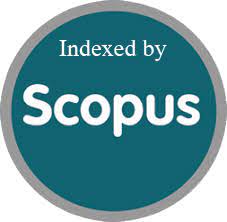Signal processing techniques to monitor and predict medication response
DOI:
https://doi.org/10.52783/jns.v14.1572Keywords:
MR, visualization, signal processing.Abstract
It is noteworthy that biomedical indicators provide important information about how biological systems behave. Physiological and clinical data are improved when these signals are handled properly. Modern physiological frameworks and idiosyncrasies are investigated both subjectively and quantitatively using sophisticated signal processing and example acknowledgment processes. Even if a clinical professional's interpretation and analysis of a sign is emotional in nature, it reflects the depth of their expertise and experience. When done with the right justification, PC analysis of biological indicators may contribute objective solidarity to the master's comprehension. Furthermore, it provides more advanced diagnosis and online monitoring of individuals who are essentially ill. Also, it offers better diagnostics and online patient checking for patients in horrible shape. In the field of clinical imaging, attractive reverberation imaging, or MR imaging, is a notable and state of the art innovation that offers accuracy and reliable information. Since attractive reverberation imaging (X-ray) is harmless and delivers no ionizing radiation, it is inclined toward above other imaging strategies for clinical imaging. In MR picture examination, division is a urgent step. The method of giving every pixel in an image a name so pixels with a similar mark have specific properties is known as picture division. A computerized picture is partitioned into various segments, each with similar pixels. The fundamental goal of picture division, which enables handling for a variety of purposes, is to deconstruct and transform an image's representation into a more rational and sensible arrangement.
Downloads
Metrics
References
Sundrani S, Chen J, Jin BT, Abad ZS, Rajpurkar P, Kim D. Predicting patient decompensation from continuous physiologic monitoring in the emergency department. NPJ Digital Medicine. 2023 Apr 4;6(1):60.
Namitha SJ, Pai P, Kamath P. An improved eeg signal feature selection paradigm for migraine detection. Journal of Internet Services and Information Security. 2024;14(3):143.
Shahabi MS, Nobakhsh B, Shalbaf A, Rostami R, Kazemi R. Prediction of treatment outcome for repetitive transcranial magnetic stimulation in major depressive disorder using connectivity measures and ensemble of pre-trained deep learning models. Biomedical Signal Processing and Control. 2023 Aug 1;85:104822.
Uchida N, Takeuchi S, Ishida T, Shibata Y. Mobile Traffic Accident Prevention System based on Chronological Changes of Wireless Signals and Sensors. J. Wirel. Mob. Networks Ubiquitous Comput. Dependable Appl.. 2017 Sep;8(3):57-66.
Zafar I, Anwar S, Yousaf W, Nisa FU, Kausar T, ul Ain Q, Unar A, Kamal MA, Rashid S, Khan KA, Sharma R. Reviewing methods of deep learning for intelligent healthcare systems in genomics and biomedicine. Biomedical Signal Processing and Control. 2023 Sep 1;86:105263.
Assegid W, Ketema G. Harnessing AI for Early Cancer Detection through Imaging and Genetics. Clinical Journal for Medicine, Health and Pharmacy. 2023 Oct 9;1(1):1-5.
Ibrahim H, Abdo A, El Kerdawy AM, Eldin AS. Signal detection in pharmacovigilance: a review of informatics-driven approaches for the discovery of drug-drug interaction signals in different data sources. Artificial intelligence in the life sciences. 2021 Dec 1;1:100005.
Sharma M, Latha B, Gupta A, Hasan DS, Rajan C, Munagala M. IoT-Embedded Deep Learning Model for Real-Time Remote Health Monitoring and Early Identification of Diseases. In2023 3rd International Conference on Technological Advancements in Computational Sciences (ICTACS) 2023 Nov 1 (pp. 655-661). IEEE.
Sejdic E, Falk TH, editors. Signal processing and machine learning for biomedical big data. CRC press; 2018 Jul 4.
Paganelli AI, Mondéjar AG, da Silva AC, Silva-Calpa G, Teixeira MF, Carvalho F, Raposo A, Endler M. Real-time data analysis in health monitoring systems: A comprehensive systematic literature review. Journal of Biomedical Informatics. 2022 Mar 1;127:104009.
Huang D, Yang H, Hao X, Zheng Y, Wei L, Zhao L, Liu Y. Spatial and task attention network for treatment response prediction in locally advanced cervical cancer radiotherapy. Biomedical Signal Processing and Control. 2024 Jan 1;87:105501.
Mohandas DR, Veena DS, Kirubasri G, Mary IT, Udayakumar DR. Federated Learning with Homomorphic Encryption for Ensuring Privacy in Medical Data. Indian Journal of Information Sources and Services. 2024;14(2):17-23.
Bollmann A, Husser D, Mainardi L, Lombardi F, Langley P, Murray A, Rieta JJ, Millet J, Olsson SB, Stridh M, Sörnmo L. Analysis of surface electrocardiograms in atrial fibrillation: techniques, research, and clinical applications. Europace. 2006 Nov 1;8(11):911-26.
Radmehr B, Ghaemi R, Mazinani SM. A Novel Intelligent Hybrid Fuzzy Method for K-Means Algorithm. International Academic Journal of Science and Engineering. 2017;4(2):242–247.
Schwitzer T, Leboyer M, Laprévote V, Dorr VL, Schwan R. Using retinal electrophysiology toward precision psychiatry. European Psychiatry. 2022 Jan;65(1):e9.
Otoom M, Otoum N, Alzubaidi MA, Etoom Y, Banihani R. An IoT-based framework for early identification and monitoring of COVID-19 cases. Biomedical signal processing and control. 2020 Sep 1;62:102149.
Downloads
Published
How to Cite
Issue
Section
License

This work is licensed under a Creative Commons Attribution 4.0 International License.
You are free to:
- Share — copy and redistribute the material in any medium or format
- Adapt — remix, transform, and build upon the material for any purpose, even commercially.
Terms:
- Attribution — You must give appropriate credit, provide a link to the license, and indicate if changes were made. You may do so in any reasonable manner, but not in any way that suggests the licensor endorses you or your use.
- No additional restrictions — You may not apply legal terms or technological measures that legally restrict others from doing anything the license permits.










